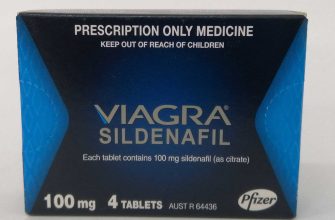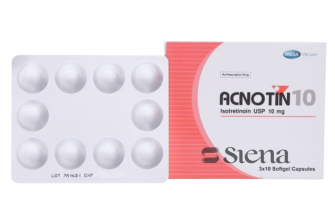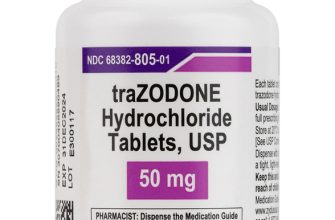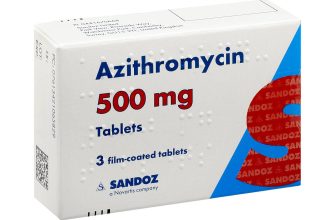Probenecid primarily treats gout and hyperuricemia by increasing uric acid excretion. This means it helps your body get rid of excess uric acid, reducing the likelihood of painful gout attacks. Remember, however, it’s not a quick fix; consistent use is key for long-term management.
Beyond gout, probenecid plays a supporting role in certain antibiotic treatments. Specifically, it prolongs the half-life of penicillin and other related drugs, allowing for less frequent dosing. This is particularly beneficial for infections requiring extended antibiotic therapy. Consult your physician to determine if this is an appropriate approach in your case.
Important note: Probenecid isn’t suitable for everyone. Kidney stones, a history of peptic ulcers, or certain allergies can be contraindications. Always discuss potential side effects and interactions with your doctor before starting probenecid treatment. They will help you weigh the benefits against potential risks based on your individual health profile.
- Probenecid Indications: A Detailed Overview
- Specific Applications
- Considerations for Use
- Gout and Hyperuricemia Management
- Dosage and Administration
- Lifestyle Modifications
- Potential Side Effects
- Drug Interactions
- Monitoring Progress
- Treatment of Chronic Gouty Arthritis
- Prevention of Gout Attacks
- Use in Combination Therapy with Other Gout Medications
- Combining Probenecid with Allopurinol
- Combining Probenecid with Febuxostat
- Specific Considerations for Renal Impairment
- Dosage Adjustments
- Monitoring
- Alternative Medications
- Creatinine Clearance and Dosage
- Note:
- Off-Label Applications and Research
- Drug Interactions and Synergistic Effects
- Neurological Applications
Probenecid Indications: A Detailed Overview
Probenecid primarily treats gout and hyperuricemia. It increases uric acid excretion by the kidneys, lowering serum uric acid levels. This reduces the frequency and severity of gout attacks. Successfully managing gout requires consistent medication adherence.
Specific Applications
Beyond gout, Probenecid finds use in prolonging the effects of certain antibiotics, specifically penicillin and cephalosporins. By inhibiting their renal tubular secretion, Probenecid allows these antibiotics to remain in the bloodstream longer, improving their efficacy against infections. This synergistic effect is valuable in treating serious bacterial infections where high and sustained antibiotic levels are critical. Dosage adjustments are often necessary when combining Probenecid with other medications.
Considerations for Use
Before starting Probenecid, a physician should evaluate kidney function. Pre-existing kidney disease or urinary stones can impact the drug’s safety and effectiveness. Regular monitoring of blood uric acid levels is advisable to ensure treatment efficacy. Potential side effects, including allergic reactions, kidney stones, and gastrointestinal upset, should be discussed. Patients should report any unusual symptoms promptly to their healthcare provider. Always follow your doctor’s instructions precisely for optimal results and safety.
Gout and Hyperuricemia Management
Probenecid helps manage gout and hyperuricemia by increasing uric acid excretion in urine. This lowers the uric acid levels in your blood, reducing the risk of gout attacks and the formation of kidney stones.
Dosage and Administration
Your doctor will determine the appropriate dose based on your individual needs. Typical starting doses range from 250mg to 500mg twice daily. Always follow your doctor’s instructions precisely. Remember to drink plenty of water to aid uric acid excretion and prevent kidney stones.
Lifestyle Modifications
Combine Probenecid with dietary changes for optimal results. Reduce consumption of purine-rich foods like organ meats, red meat, and shellfish. Maintain a healthy weight and increase physical activity. These adjustments, alongside medication, contribute significantly to managing your condition.
Potential Side Effects
While generally well-tolerated, Probenecid can cause side effects such as nausea, headache, and skin rashes. Rarely, it may lead to kidney stones. Report any concerning symptoms to your physician immediately. Regular blood tests monitor kidney function and uric acid levels during treatment.
Drug Interactions
Probenecid interacts with certain medications, including aspirin and some antibiotics. Inform your doctor about all medications you’re currently taking to avoid potential complications. This ensures safe and effective treatment.
Monitoring Progress
Regular check-ups with your doctor are vital to monitor your progress and adjust your treatment plan as needed. This allows for proactive management of your gout and hyperuricemia.
Treatment of Chronic Gouty Arthritis
Probenecid plays a key role in managing chronic gouty arthritis. It helps your body excrete uric acid more efficiently, lowering levels in your blood and preventing future attacks.
Successful treatment requires a multi-pronged approach. Here’s what you need to know:
- Medication: Probenecid is usually combined with other medications. Your doctor will likely prescribe a nonsteroidal anti-inflammatory drug (NSAID) for pain relief during acute flares. Colchicine might also be used to reduce inflammation. Allopurinol is another option for lowering uric acid, particularly if Probenecid is insufficient.
- Lifestyle Changes: Diet significantly impacts uric acid levels. Reduce your intake of purine-rich foods such as red meat, organ meats, and certain seafood. Maintain a healthy weight; obesity increases the risk of gout attacks. Adequate hydration is also crucial–drink plenty of water.
- Monitoring Uric Acid Levels: Regular blood tests are necessary to track uric acid levels and adjust your medication accordingly. Your doctor will monitor your response to treatment and make necessary modifications to achieve optimal results. This helps prevent further gout flares.
Remember, individual responses to treatment vary. Close collaboration with your doctor is vital for personalized management of your chronic gouty arthritis. They will adjust your treatment plan based on your specific needs and response. Consistent adherence to your treatment plan is key to long-term success.
- Follow your doctor’s instructions regarding medication dosage and timing meticulously.
- Report any side effects or concerns immediately to your healthcare provider.
- Maintain open communication with your doctor to ensure the best possible management of your condition.
Prevention of Gout Attacks
Probenecid helps prevent gout attacks by increasing uric acid excretion. This means your body gets rid of excess uric acid, reducing the likelihood of uric acid crystals forming in your joints, the primary cause of painful gout flares.
To maximize this effect, combine Probenecid with lifestyle changes. Maintain a healthy weight; excess weight increases uric acid levels. Drink plenty of water – at least eight glasses daily – to aid uric acid elimination. Follow a low-purine diet, limiting foods high in purines like organ meats, red meat, and shellfish.
Regular exercise, even moderate activity like brisk walking, is beneficial. It helps manage weight and improves overall health, indirectly supporting lower uric acid levels. It’s crucial to discuss medication adjustments and lifestyle modifications with your doctor for a personalized gout management plan.
Note: Probenecid can have side effects. Report any unusual symptoms to your doctor immediately. Regular blood tests monitor kidney function while taking this medication.
Remember: Preventing gout attacks requires a proactive approach combining medication and lifestyle modifications. Consistent adherence to your doctor’s recommendations is key to long-term success.
Use in Combination Therapy with Other Gout Medications
Probenecid’s ability to increase uric acid excretion makes it a valuable addition to other gout medications. Doctors often combine it with xanthine oxidase inhibitors like allopurinol or febuxostat. This combination strategy aims to both reduce uric acid production (by xanthine oxidase inhibitors) and enhance its elimination (by probenecid). This two-pronged approach can lead to faster and more effective lowering of serum uric acid levels, ultimately improving gout management.
Combining Probenecid with Allopurinol
When used together, allopurinol reduces uric acid production, while probenecid actively promotes its excretion. This synergistic effect accelerates the reduction of urate crystals in the body. Close monitoring of uric acid levels and kidney function is vital during this combined therapy. Adjusting dosages may be necessary based on individual responses and tolerance.
Combining Probenecid with Febuxostat
Similar to the allopurinol combination, febuxostat and probenecid work in tandem to lower uric acid levels. Febuxostat inhibits xanthine oxidase, reducing uric acid production, whereas probenecid enhances uric acid excretion through the kidneys. Again, regular monitoring of serum uric acid and renal function is critical to ensure safe and effective treatment.
Remember, this information is for general knowledge and should not replace advice from a healthcare professional. Always consult your doctor before starting any new medication or altering your treatment plan.
Specific Considerations for Renal Impairment
Reduce the probenecid dose for patients with renal impairment. This is because probenecid is primarily excreted by the kidneys. Reduced kidney function means slower excretion, leading to increased drug levels and a higher risk of side effects.
Dosage Adjustments
Precise dosage adjustments depend on the severity of renal impairment, typically assessed using creatinine clearance (CrCl). Consult your prescribing information for detailed recommendations. Generally, lower doses are needed for lower CrCl values. Regular monitoring of serum probenecid levels and kidney function is recommended during treatment.
Monitoring
Closely monitor patients for adverse effects, especially those with impaired renal function. These may include gastrointestinal upset, rash, or hematologic abnormalities. Frequent laboratory tests might be necessary, including complete blood counts and liver function tests.
Alternative Medications
In cases of severe renal impairment, consider alternative medications to probenecid for managing hyperuricemia or gout. Your physician can help you determine the best approach based on your individual health status.
Creatinine Clearance and Dosage
| Creatinine Clearance (CrCl) mL/min | Dosage Adjustment |
|---|---|
| >50 | Standard dose may be appropriate. Monitor closely. |
| 30-50 | Reduce dose; frequency of monitoring increased. |
| <30 | Significant dose reduction or alternative medication is typically necessary. |
Note:
This table provides general guidance. Always refer to the specific product labeling and consult with a healthcare professional for individualized dosing instructions.
Off-Label Applications and Research
Probenecid’s ability to inhibit organic anion transporters (OATs) fuels ongoing research into its potential beyond its FDA-approved uses. Studies explore its role in enhancing the efficacy of other medications. For example, preliminary research suggests potential benefits in combination therapy for certain viral infections by increasing the concentration of antiviral drugs at the site of infection. This is achieved by reducing the renal clearance of these drugs.
Drug Interactions and Synergistic Effects
Researchers are actively investigating probenecid’s interaction with various medications. One area of focus includes its potential to boost the effectiveness of anticancer drugs by limiting their excretion and increasing their therapeutic concentration within tumor tissues. However, careful monitoring is crucial due to the increased risk of side effects associated with higher drug levels. These studies frequently utilize pharmacokinetic modeling to predict optimal dosing regimens and mitigate potential toxicity.
Neurological Applications
Limited preclinical studies suggest a possible role for probenecid in managing certain neurological conditions. This stems from its ability to alter the levels of neuroactive compounds in the central nervous system. More research is needed to validate these findings and explore the clinical significance of these effects. These studies are primarily focusing on animal models currently, with translation to human trials still in early stages.










